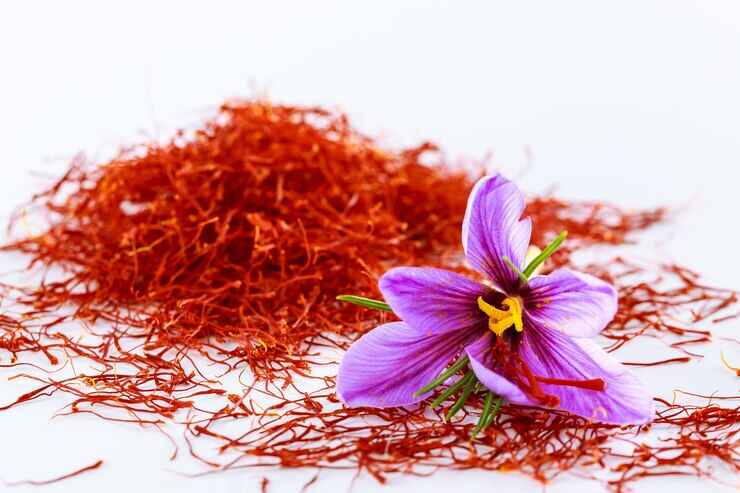Saffron: Exploring its Multifaceted Uses, Potential Side Effects, and More

The Splendid World of Saffron
Saffron, often referred to as red gold, is not just a spice used in cooking; it’s a cultural that spans continents with its uses in food, medicine, and art. This exotic spice has been cherished for over three millennia, woven into the tapestry of various civilizations. But what makes saffron so special? What are its health benefits, and are there any side effects we should be aware of? Join us as we delve deeply into the vibrant threads that make up the story of saffron.
The Culinary Delights of Saffron
Saffron is revered in the culinary world for its unique flavor and vibrant coloring. It’s a staple in many traditional dishes around the globe, from the saffron-infused risotto alla Milanese in Italy to India’s rich and aromatic biryani.
Key Dishes to Try
-
Paella Valenciana: This traditional Spanish dish combines saffron, rice, seafood, and sometimes chicken, beautifully highlighting the spice’s flavor as it melds with the ingredients.
-
Kashmiri Saffron Pulao: In this dish, saffron not only enhances the flavor but also imparts a rich golden color to the rice, making it a festive favorite in North India.
-
Saffron Tea: A soothing Persian recipe that mixes saffron with tea, rose petals, and herbs to create a warming drink.
The magic lies in the way saffron subtly enhances the dish, complementing other ingredients without overpowering them. To get the best out of saffron in cooking, remember to soak it in a little warm water or milk. This not only intenspliant identities the flavor and color but also helps distribute it more evenly throughout the dish.
Saffron in Health and Medicine
Historically, saffron has been more than just a culinary delight. Its use in traditional medicine spans various cultures, being used to treat everything from menstrual symptoms to mood disorders.
Health Benefits Explored
-
Mood Improvement: Research suggests that saffron might have antidepressant properties similar to conventional medications like fluoxetine and imipramine.
-
Antioxidant Powerhouse: Saffron contains an impressive array of plant compounds with antioxidant properties, including crocin, crocetin, safranal, and kaempferol. These antioxidants help protect your cells against oxidative stress.
-
Heart Health: There’s growing evidence that the spice can help in reducing blood pressure and cholesterol levels, which are significant factors for heart disease.
While these benefits are promising, saffron should not replace professional medical advice or necessary treatment. Always consult with a healthcare provider before starting any new treatment plans.
Considering the Side Effects and Risks
As with many potent substances, saffron can have its downsides if used improperly or in excessive amounts.
What to Watch Out For
-
Pregnancy and Breastfeeding: While culinary amounts are generally safe, medicinal amounts might pose risks during pregnancy, potentially causing miscaractions.
-
Allergies: People who are sensitive to Lolium, Olea (includes olive), and Salsola plant species might also react to saffron.
-
Overdose Risks: High doses of saffron can be toxic and may cause poisoning symptoms such as vomiting, bleeding, and numbness.
Moderation is key when it comes to incorporating saffron into your diet or health regimen. Typically, a dose of around 1.5 grams of dried saffron per day is considered safe and beneficial.
Saffron Beyond the Kitchen and Clinic
Artistic Uses
The use of saffron as a dye in cloth and artwork dates back to ancient times. Its vibrant golden-yellow hue has not only beautified fabrics but has also been used in paintings for its non-fading property.
Cultural Significance
Saffron holds a significant place in the religious and cultural ceremonies of various cultures. In Hinduism, it represents a holy color used in the worship of deities. Meanwhile, in Iran and other parts of the Middle East, it is essential to wedding rituals.
Conclusion: Embrace the Golden Spice
From sprucing up your risotto to potentially uplifting your mood, saffron is indeed a spice worth its weight in gold. While it comes with its set of precautions, the benefits of integrating saffron into your life can be manifold. Whether you choose to dive into its culinary attributes or explore its health potentials, saffron promises a golden touch.
Remember, the key to harnessing the true potential of saffron lies in its moderation and quality. So next time you hold this precious spice, remember you’re holding a piece of history and culture that has transcended age-old borders and societal divides.
Whether you are a culinary enthusiast or someone looking for natural health remedies, incorporating saffron might just add that touch of sparkle to your routine. So, why not let this ancient treasure spice up your life?